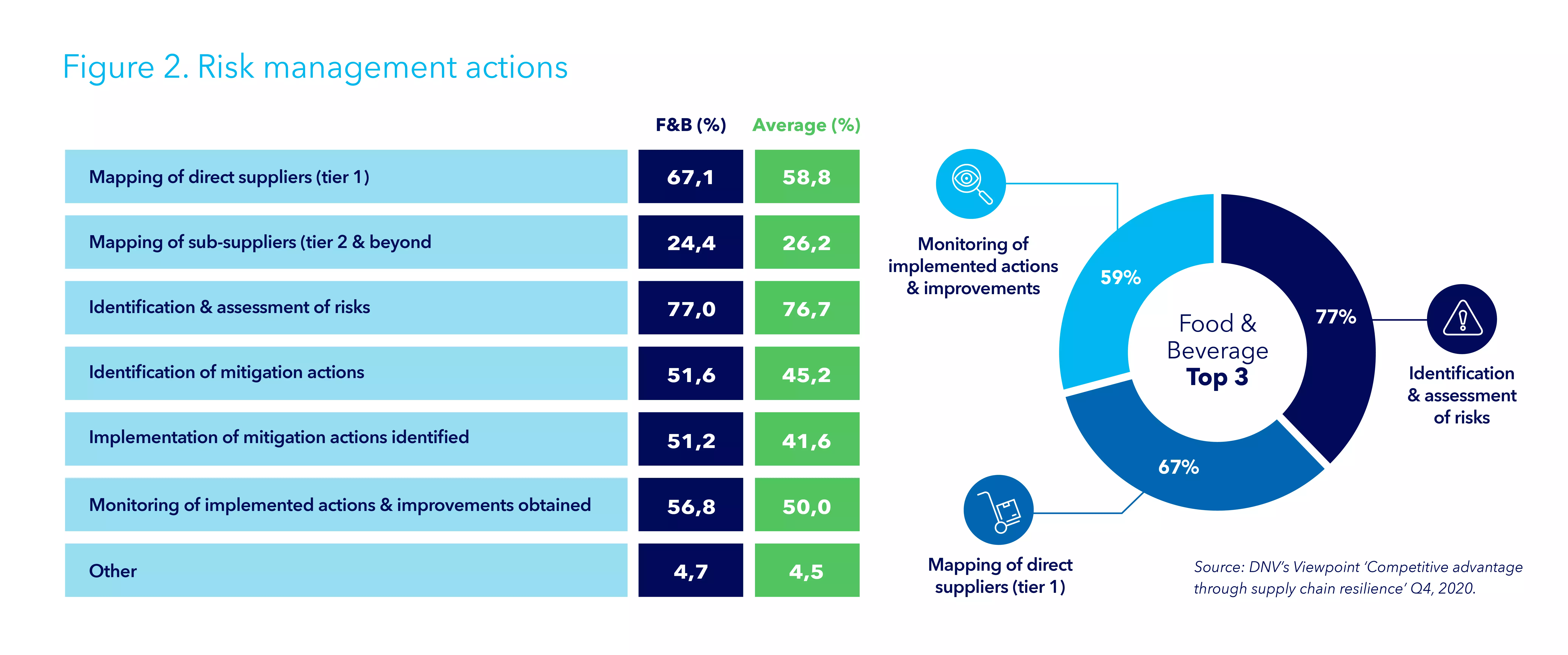/SPONSORED CONTENT/
Consumers rely on us for food to be provided safely under any circumstances. When forced to tackle something as invasive and prolonged as the pandemic, how is the industry tackling the challenge and are lessons learned impacting supply chain strategies?
Food fraud, cross-contamination and defense risks, as well as increased food declaration and origin regulation, were the main food safety challenges actively battled even before the pandemic. Lockdown and other COVID-19 restrictions imposed challenges for companies to ensure supplies or continue supplier qualification and food safety certifications to safeguard the food supply chain and consumer health. This was not unique to food and beverage companies, of course, but entire countries in partial or full lock down around the globe, were relying on them for a steady supply of food. Industrial manufacturing companies suffered from lack of demand.
Food and beverage manufacturers and retailers were challenged with over demand. Food supply disruptions seem mostly to have been short-lived, thankfully. However, what has been going on behind the scenes?
Despite the overdemand, DNV’s Viewpoint survey “Competitive advantage through supply chain resilience” (July 2020) showed that 49% of the food and beverage companies participating experienced reduced sales. This should be considered within a context where 46% experienced increased operational costs, 37% production reduction and 30% international operational constraints. There is little doubt that companies had to adjust, finding new ways to continue operations and deliver on essential demands early on.
The pandemic lifted problems that had to be managed quickly and safely. Delays in supplies hit 42%, problems with delivery and logistics 32%, and limitations to international trade, lack of available material/services or suppliers in lockdown hit about one fourth of the surveyed companies. Effective mitigation demands an overview and control of one’s entire supply chain.
Herein may lie a potential limitation. While 67% of companies surveyed map direct suppliers (tier 1), only 24% map tier 2 suppliers and beyond. Traditional supply chain management approaches are resource demanding, which can constrain possibilities to reach deeper down the supply chain. Here we see digital technologies filling a gap, increasing reach and transparency throughout value chains.
Recommended best practice for supply chain continuity during a crisis is to be flexible, first enter into a dialogue with suppliers and implement actions thereafter. Companies have allowed more favorable lead times, maintained orders and reviewed terms & conditions to manage existing suppliers.
Continuity can never be prioritized ahead of safety. The pandemic has not changed, probably rather reinforced, the significance of supplier qualification and certification maintenance. In addition to product quality and safety, another issue became paramount: protecting employees’ health and safety. Companies with activities demanding physical presence now required implementation of hospital grade infection risk management systems, impacting manufacturing sites in particular.
In addition, audits gradually moved remotely. In January 2021, 57% in DNV’s customer survey on remote audits had participated in one. For the majority, the remote experience was a blended audit, using physical activities where required by scheme owners, accreditation bodies and GFSI. The primary motivation was not surprisingly to maintain certifications (84%). Efficient time use for personnel being audited and the ability for managers to follow audits in other locations were also rated high. Especially for companies with limited control of indirect suppliers, remote alternatives can enable contact and dialogue with more suppliers. GFSI has recognized partial use of remote audits in food safety audits and companies do predict that blended audits, in particular, are here to stay. We believe that deploying the best of both worlds will advance both food safety and supply chain management.
Companies are indicating strategic changes based on the pandemic experience, from pursuing alternative suppliers (34%), reviewing stock management practices (31%) and revising supplier qualification criteria based on a wider set of risks (29%). While hoping for higher numbers, we welcome that 23% will introduce digitalization. In our 2019 survey, only 9% indicated its immediate potential. Companies seem to have their eyes on blockchain technology to support supply chain management efforts. The good news is that effective solutions are already developed and in use.
Going forward, robust traceability and preventive systems using digital technologies for real-time data collection and monitoring throughout supply chains are a game-changer. This will enable detection of consumer product recall issues at the source, for example, instead of retail stores. Comprehensive track & trace solutions give full control and transparency of a product’s total journey. From secure and continuous food safety controls, regulatory compliance and trusted transactions, traceability is built covering a wider range of risks all the way to the consumer.
The pandemic created an experiment no-one wanted, of course. Food and beverage companies seem to have responded actively, systematically and with maturity. Consequences of known and a wider set of risks have been exposed. Companies have been forced to manage and mitigate immediate risks while also reconsidering how future resilience and sustainability is built.
Building on existing, robust food safety systems and cultures, is essential. In addition, we strongly believe that companies must be open to new approaches and embrace digital tools and solutions. This will not only improve food safety and supply chain management but advance the industry by enabling new business models, product marketing and consumer engagement.
Joy Laing
Global Food & Beverage Director, Business Assurance
DNV


